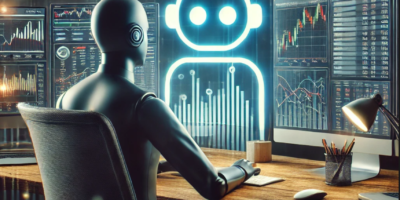Anyone who follows financial markets has probably heard about the tragic death of Alexander Kearns, a 20-year-old college student found dead after trading financial products he did not understand. Alexanders’ horrific tale is an extreme manifestation of the consequences associated with inadequate preparation by traders. The world of financial markets is not kind to naivete or hastiness; although Kearns’ story should not discourage market participants, it should serve as a powerful reminder that trading is a very serious enterprise which requires commitment, discipline, and knowledge. This article will attempt to encapsulate the recent phenomenon of green traders pouring into the markets.
How did quarantine create a new generation of traders?
Financial markets are primarily a focus of intellectually curious analytical thinkers who dedicate substantial amounts of time to understanding them. Given that, it is somewhat contradictory to imagine a cohort of (primarily) young people using trading as an outlet to focus their energy during quarantine. That is, the increase in Netflix binging is unsurprising but the idea that a bunch of young kids would choose to trade securities during their quarantine down time doesn’t seem right, does it? The answer to this question lies primarily in the absence of live sports. Over time, young people (especially college students) have become increasingly engaged with digital sports betting, and, like any gamblers, when their old fix disappeared they sought a new one. In this case, securities trading filled that void perfectly.
Although both sports betting and securities trading can be vehicles for thoughtless gambling, the latter is arguably more dangerous to those who choose to gamble. This is because financial markets contain complex instruments which are affected by macroeconomic, microeconomic, and technical variables with a floor-level complexity far higher than sports betting. That is to say, it is possible to develop a reasonable thesis in sports betting after watching a few hours of the sport; it is not realistically possible to develop a reasonable thesis in financial markets after observing them for a few hours. Given this vastly greater floor-level complexity, the transition from sports betting to securities trading was likely very poor for many of the millennials who made this leap of faith.
The interface breakdown
Although trading in financial markets is arguably far more complex than sports betting, some new trading platforms have facilitated a masquerade of this fact. Simplistic platforms which feature pleasing aesthetics can make financial markets feel like yet another game. Additionally, inadequate explanations of user interfaces can result in new traders misunderstanding their positions. Yet another critical difference between financial markets and sports betting is the opportunity to use leverage, a tool which should be reserved only for experienced traders.
This dangerous combination begs the question as to what kinds of marketing trading platforms should be allowed to use; moreover, should such platforms be discouraged from attempting to recruit brand-new traders by representing trading as a safe and casual activity? These questions will require careful thought by legislators and platform designers alike.
It is worth noting that Kearns himself is suspected to have committed suicide due to misunderstanding his exposure rather than having actually incurred extreme losses. Specifically, Kearns witnessed his account balance fall to -$730,000, which he believed was the result of having leveraged his trades without realizing it. In reality, it is far more likely that his trading platform was reporting this notional exposure as a result of his trades being incomplete. That is, once his options trades completed, he would probably not have had any obligations of that size.
How did bankrupt companies get so popular?
In addition to Kearns’ tragic story, the popularity of bankrupt companies amongst the wave of new traders has been a focal point of media attention. Companies like Hertz have received attention from new stock and option traders. Given that the intrinsic value of a bankrupt company is essentially 0 (it is 0 unless creditors agree to allow shareholders to keep some amount of the profits), trading such companies is exceptionally dangerous. Granted, technical analysis may provide opportunities for traders to swoop in and extract value before the price collapses, however, such tactics should be reserved for expert traders who fully understand the associated risks.
What can be learned from the recent mania?
Although no one can bring Alex Kearns back, these events have once again illustrated the importance of traders understanding what they are buying and selling. At BetterTrader, we continue to prioritize education and a data-driven interface over flashy, push-notification marketing. Additionally, we hope that new traders conduct the appropriate due diligence before risking large amounts of capital in financial markets.

















